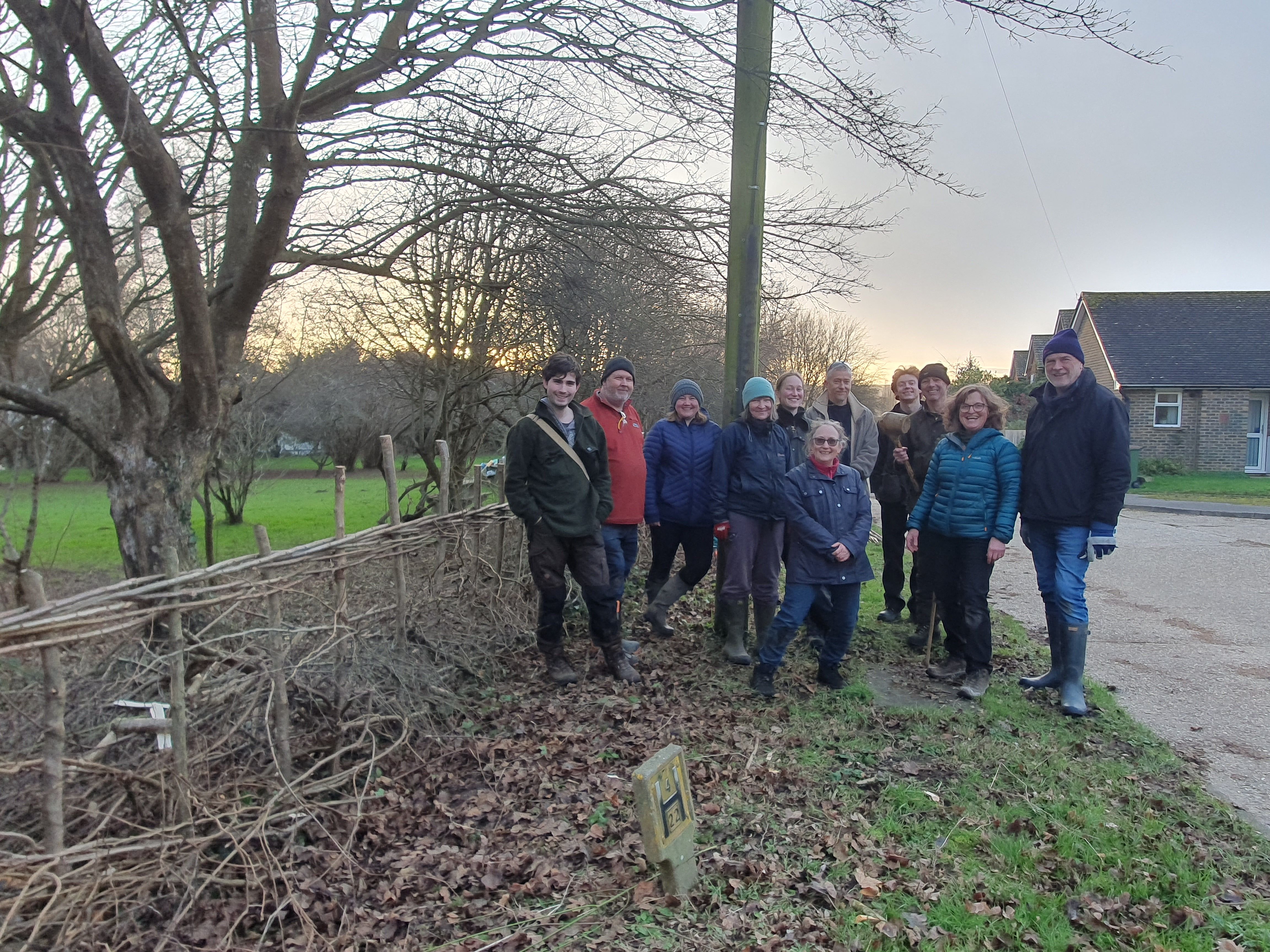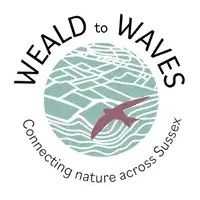Hedging Our Bets for Nature Recovery
By Judy Agate - 27 March 2024
Hedgelaying and Nature Recovery in Amberley Village
As part of a village community, an aspect I love is the feeling of belonging to something that is bigger than the individual. Opportunities arise to get involved and to share knowledge and skills, as well as time together.
Already a trustee of our local greenspace – the Millennium Green, I was recently asked to join the newly formed Climate Action and Nature Recovery Group (now Greener Amberley), a work party of the Parish Council; whose remit is to deliver exactly what it says on the bottle, through the implementation of their new strategy for Amberley.
Working to create more biodiversity and develop an effective wildlife corridor within our parish, has been an initial focus, through the identification of opportunities within our landscape. Being inside the boundaries of support offered by South Downs National Park (SDNP), the Weald to Waves Project and Wilder Horsham, we consider ourselves to be in a very fortunate position. Sending our shoots out to weave connections, we have moved from strength to strength in a very short space of time.
The green spaces that have been identified within Amberley to date are the Recreation Field, the village pond, Amberley Millenium Green and a potential green space, kindly donated by a local philanthropist, to create a community orchard. Connections are also being created with our neighbouring landowners, extending our wildlife corridor even further east to west.
This winter, projects so far have been in conjunction with the trustees who manage the Millennium Green. An existing coppicing programme has seen a further coupe be cut, producing stakes, bean poles, and pea sticks for the local community. Within the management plan a hedge line had already been identified as a site for laying, and for the past 2 years has been allowed to grow to a suitable height for such a project. Working with SDNP and Graham West, a professional hedgelayer, local volunteers from the village and the SDNP have worked together to create this beautiful new habitat. The benefits of a laid hedge are many – a denser hedge creating a natural boundary, shelter for wildlife, a wildlife corridor for small animals and birds, a habitat where fungi and other plants can slowly spread.
In the Recreation Field a new hedge was planted at the beginning of March, consisting of 450 native hedging plants from the Woodland Trust - a mix of field maple, dogwood, hazel and hawthorn. Again, this will be an opportunity for the community to come together to enjoy time in Nature developing ‘sense of place’, for most this being an unknown benefit for now. We are also planning to plant a range of new trees including a Black Poplar, a disease resistant Elm and a Small Leaved Lime around the edges of this space.
Several months on, and we are already reaping the rewards of our work. Small leaves are peeking out from tree guards, while the newly laid hedge has burst into life. The vibrant new green leaves, and dense undergrowth close to the ground are providing new cover for our wildlife, and a visually stunning new boundary for our greenspace.


